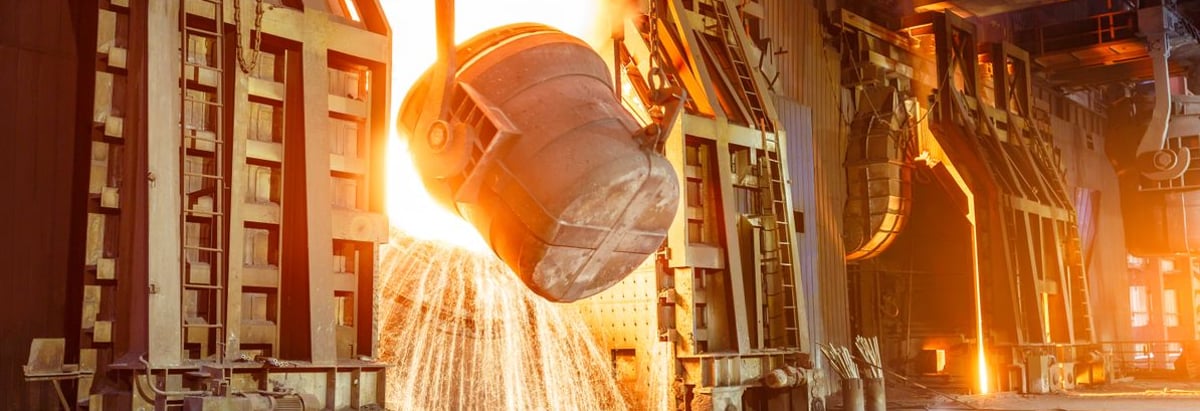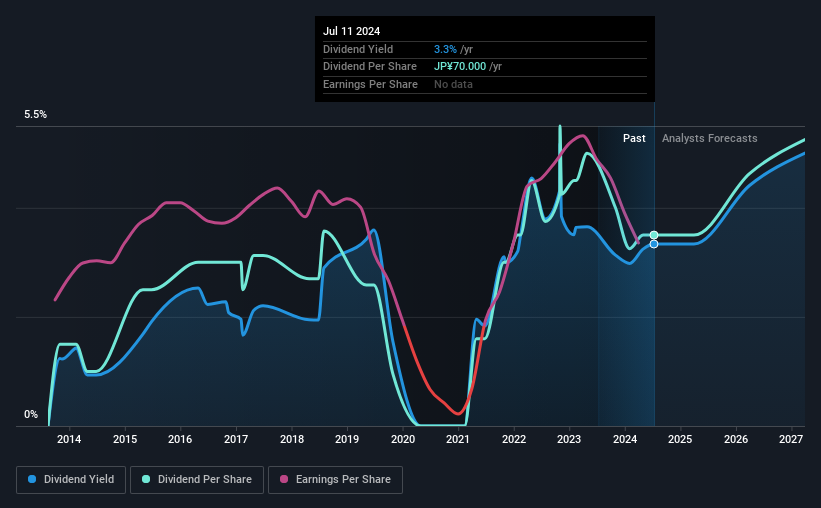
Sanyo Special Steel Co., Ltd. (TSE:5481) has announced that on 2nd of December, it will be paying a dividend of¥20.00, which a reduction from last year's comparable dividend. The dividend yield will be in the average range for the industry at 3.3%.
View our latest analysis for Sanyo Special Steel
Sanyo Special Steel's Earnings Easily Cover The Distributions
While it is always good to see a solid dividend yield, we should also consider whether the payment is feasible. However, Sanyo Special Steel's earnings easily cover the dividend. This means that most of its earnings are being retained to grow the business.
Over the next year, EPS is forecast to expand by 11.1%. If the dividend continues on this path, the payout ratio could be 29% by next year, which we think can be pretty sustainable going forward.

Dividend Volatility
The company's dividend history has been marked by instability, with at least one cut in the last 10 years. The dividend has gone from an annual total of ¥30.00 in 2014 to the most recent total annual payment of ¥70.00. This implies that the company grew its distributions at a yearly rate of about 8.8% over that duration. It's good to see the dividend growing at a decent rate, but the dividend has been cut at least once in the past. Sanyo Special Steel might have put its house in order since then, but we remain cautious.
Dividend Growth Is Doubtful
Growing earnings per share could be a mitigating factor when considering the past fluctuations in the dividend. Sanyo Special Steel has seen earnings per share falling at 6.9% per year over the last five years. A modest decline in earnings isn't great, and it makes it quite unlikely that the dividend will grow in the future unless that trend can be reversed. Earnings are predicted to grow over the next year, but we would remain cautious until a track record of earnings growth is established.
Our Thoughts On Sanyo Special Steel's Dividend
Overall, the dividend looks like it may have been a bit high, which explains why it has now been cut. The payments haven't been particularly stable and we don't see huge growth potential, but with the dividend well covered by cash flows it could prove to be reliable over the short term. We would probably look elsewhere for an income investment.
It's important to note that companies having a consistent dividend policy will generate greater investor confidence than those having an erratic one. At the same time, there are other factors our readers should be conscious of before pouring capital into a stock. For instance, we've picked out 2 warning signs for Sanyo Special Steel that investors should take into consideration. If you are a dividend investor, you might also want to look at our curated list of high yield dividend stocks.
New: Manage All Your Stock Portfolios in One Place
We've created the ultimate portfolio companion for stock investors, and it's free.
• Connect an unlimited number of Portfolios and see your total in one currency
• Be alerted to new Warning Signs or Risks via email or mobile
• Track the Fair Value of your stocks
Have feedback on this article? Concerned about the content? Get in touch with us directly. Alternatively, email editorial-team (at) simplywallst.com.
This article by Simply Wall St is general in nature. We provide commentary based on historical data and analyst forecasts only using an unbiased methodology and our articles are not intended to be financial advice. It does not constitute a recommendation to buy or sell any stock, and does not take account of your objectives, or your financial situation. We aim to bring you long-term focused analysis driven by fundamental data. Note that our analysis may not factor in the latest price-sensitive company announcements or qualitative material. Simply Wall St has no position in any stocks mentioned.
Have feedback on this article? Concerned about the content? Get in touch with us directly. Alternatively, email editorial-team@simplywallst.com
About TSE:5481
Sanyo Special Steel
Manufactures and sells special steel products in Japan and internationally.
Flawless balance sheet low.
Market Insights
Community Narratives




